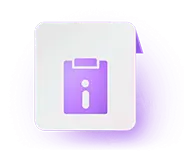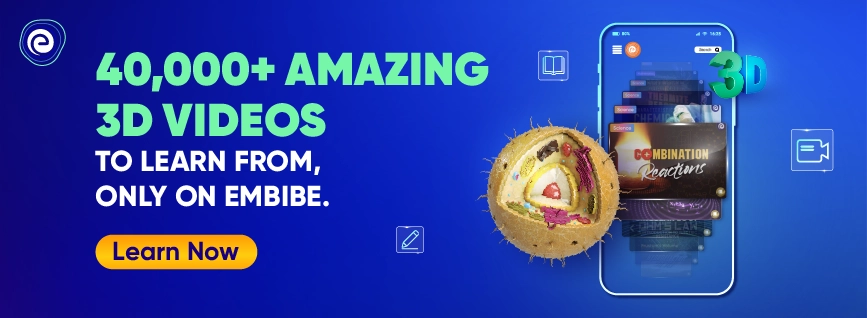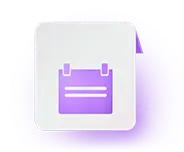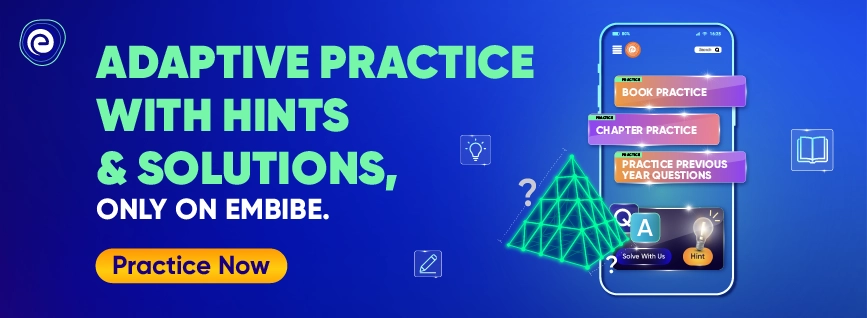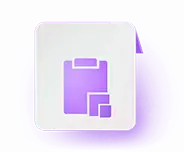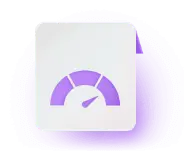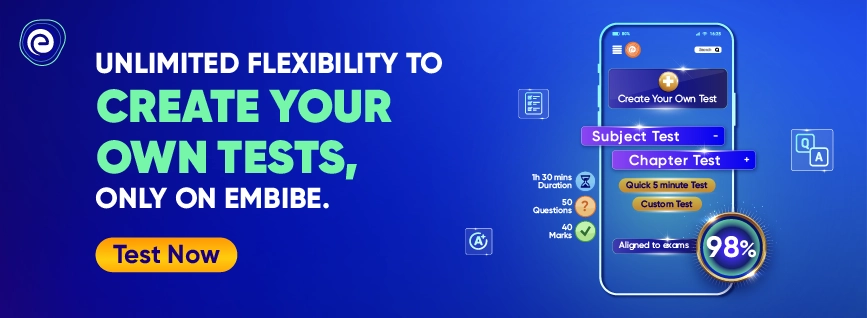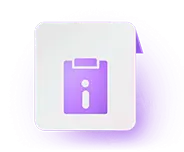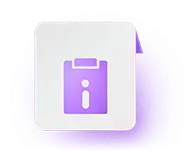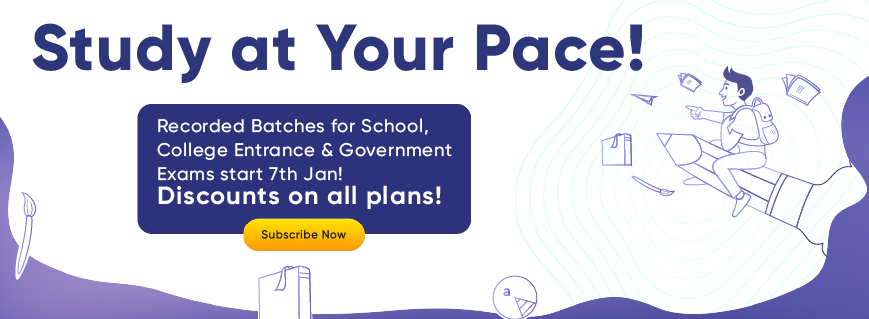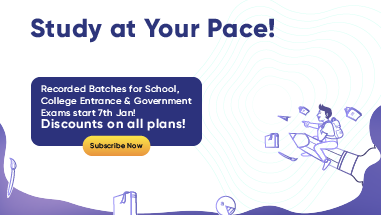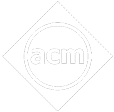- Written by aparna
- Last Modified on 10-12-2024
Ladakh Board Class 8 Exam 2025
The Central Board of Secondary Education is in charge of administering the exams throughout the state from the first to twelfth grades. All schools run by the government of Ladakh follow the CBSE curriculum. The board has complete authority over implementing higher secondary and senior secondary level education in state-affiliated schools.
The board is responsible for amending the curriculum, providing textbooks, appointing teachers, and conducting exams in all state’s affiliated schools. The Government of Ladakh has established a separate education board (after scrapping article 370) from 27/09/2021. Scroll down to read more about Ladakh board Class 8 exams.
Ladakh Board Class 8 Exam Summary 2025
CBSE administers the Ladakh board exams. Because the union territory lacks an autonomous board, the exam is administered by CBSE. Ladakh offers education at three levels: primary, secondary, and tertiary. The designated board administers exams at these levels. Students must score at least 33% marks to qualify for the next standard. Students who cannot clear the exams on the first attempt can attend the supplementary exams.
Before knowing more about Ladakh board Class 8 exams, students can have a glance at the table mentioned below to know the overview of the Ladakh board Class 8 exams.
| Particulars |
Details |
| Name of Exam |
Ladakh Board Class 8 Exam |
| Conducting Board |
Central Board of Secondary Education |
| Exam Level |
State Level |
| Frequency of Exam |
Annual |
| Mode of Registration |
Offline for regular students
Online for private candidates |
| Mode of Exam |
Offline |
| Primary Subjects |
Science, Mathematics and Social Science |
| Language Subjects |
English, Hindi |
Ladakh Board Official Website Link
http://dse.ladakh.gov.in/
Ladakh Board Class 8 Exam Pattern 2025
Ladakh Board Class 8 follows the CCE pattern (Continuous and Comprehensive Evaluation) The CCE pattern includes two kinds of tests: formative assessment (FA) and summative assessment (SA).
- Formative Assessment (FA): They include a student’s performance in class, classwork, homework, project submission, and active participation in various class events. Formative assessments (conducted four times during an academic session) account for 40% of the total.
- Summative Assessment (SA): Three-hour written tests are used in the summative assessment to assess the student’s intellectual understanding. Summative assessment (a three-hour written test administered twice; SA-1 is administered after FA-1 and FA-2, and SA-2 is administered after FA-3 and FA-4) accounts for 60% of the total. There are two summative assessments: one at the mid of the year and one at the end of the year.
The CCE pattern followed for Class 8 is as follows:
| Name of CCE Activity |
Code of the CCE Activity |
Activities |
Marks |
| Formative Assessment – 1 |
FA1 |
Activity 1 + Activity 2 + Written Test |
15+15+20=50 |
| Formative Assessment -2 |
FA2 |
Activity 1 + Activity 2 + Written Test |
15+15+20=50 Marks |
| Summative Assessment -1 |
SA1 |
Written Exam |
80 Marks |
| Formative Assessment – 3 |
FA3 |
Activity 1 + Activity 2 + Written Test |
15+15+20=50 Marks |
| Formative Assessment – 4 |
FA4 |
Activity 1 + Activity 2 + Written Test |
15+15+20=50 Marks |
| Summative Assessment – 2 |
SA2 |
Written Exam |
80 Marks |
Ladakh Board Class 8 Exam Syllabus 2025
Students of Ladakh board Class 8 must be well aware of the syllabus included in the curriculum. Knowing the topics in each subject helps students draft a good preparation plan dividing equal time and focus to each subject. It is advisable that the students refer to each topic and subtopic thoroughly so that they can get the chance to score better marks. Students can go through the detailed syllabus mentioned below for each subject:
Ladakh Board Class 8 Maths Syllabus
According to the CBSE textbook of Mathematics for Class 8, the following chapters are included in the syllabus for Class 8 Mathematics. The students must follow the classroom teaching and practice the problems daily to develop speed and accuracy in problem-solving.
| Sr. No. |
Chapter Names |
| 1 |
Rational Numbers |
| 2 |
Linear equation in one variable |
| 3 |
Understanding Quadrilaterals |
| 4 |
Practical Geometry |
| 5 |
Data Handling |
| 6 |
Squares and Square roots |
| 7 |
Cube and Cube roots |
| 8 |
Comparing Quantities |
| 9 |
Algebraic expression and Identities |
| 10 |
Visualising Solid Shapes |
| 11 |
Mensuration |
| 12 |
Exponents and Powers |
| 13 |
Direct and Inverse Proportions |
| 14 |
Factorisation |
| 15 |
Introduction to Graphs |
| 16 |
Playing with Numbers |
Ladakh Board Class 8 Science Syllabus
According to the CBSE textbook of Science for Class 8, the following chapters are included in the syllabus for Class 8 Science. Students must ensure that they give equal importance to all the three subjects to score good marks in Class 8 Science.
| Unit No. |
Topic Name |
| Unit 1 – Food |
Crop ProductionMicro-organisms |
| Unit 2- Materials |
Materials in daily lifeDifferent kinds of materials and their reactionsHow things change/ react with one another |
| Unit 3- The world of The Living |
Why conserveThe cellHow babies are formed |
| Unit 4- Moving things, People and Ideas |
Idea of forceFrictionPressureSound |
| Unit 5: How Things Work |
Electric current and circuits |
| Unit 6: Natural Phenomena |
Rain, thunder and lightningLightNight skyEarthquakes |
| Unit 7: Natural Resources |
Man’s intervention in phenomena of naturePollution of air and water |
Ladakh Board Class 8 Social Science Syllabus
As the syllabus of Social Science is vast, students must focus on completing each topic of History, Geography and Civics every day so that they do not feel overwhelmed at the last minute. According to the CBSE textbook of Social Science for Class 8, the following chapters are included in the syllabus for Class 8 Social Science.
Ladakh Board Class 8 History Syllabus
Class 8 History syllabus of the Ladakh board helps students to understand the important events that occurred in the past before India’s independence. Below mentioned is the detailed syllabus of the History syllabus:
| Chapter No. |
Chapter Name |
| 1 |
How, When and Where |
| 2 |
From Trade to Territory: The Company Establishes Power |
| 3 |
Ruling the countryside |
| 4 |
Tribals, Dikus and the Vision of a Golden Age |
| 5 |
When People Rebel 1857 and After |
| 6 |
Weavers, Iron Smelters and Factory Owners |
| 7 |
Civilising the “Native”, Educating the Nation |
| 8 |
Women, Caste and Reform |
| 9 |
The Making of the National Movement: 1870-1947 |
| 10 |
India After Independence |
Ladakh Board Class 8 Geography Syllabus
The topics of the Geography Ladakh board Class 8 syllabus are important for the students to understand the basics of Agriculture, Human Resouces and Industries. By studying these topics in depth, students can easily comprehend the chapters of the upco
syllabus of Ladakh board Class 8 Geography is mentioned below:
| Chapter No. |
Chapter Name |
| 1 |
Resources |
| 2 |
Land, Soil, Water, Natural Vegetation and Wildlife Resources |
| 3 |
Mineral and Power Resources |
| 4 |
Agriculture |
| 5 |
Industries |
| 6 |
Human Resources |
Ladakh Board Class 8 Civics Syllabus
Studying the topics of Ladakh board Class 8 Civics teaches the students the basic understanding about the Indian Constitution, laws, the importance of the parliament and how Judiciary system works in India. Students can learn the topics from a general point of view to make the learning interesting and easy. Below-mentioned is the detailed Civics syllabus.
| Chapter No. |
Chapter Name |
| 1 |
The Indian Constitution |
| 2 |
Understanding Secularism |
| 3 |
Why do we need a Parliament |
| 4 |
Understanding Laws |
| 5 |
Judiciary |
| 6 |
Understanding our Criminal Justice System |
Ladakh Board Class 8 English Syllabus
English for Class 8 is divided into two parts:
- a. English Literature, and
- b. English Grammar & Composition
The Class 8 English Literature section is based on a main textbook of English and a Supplementary Reader in English. Let us see what is included in each of the two books.
Ladakh Board Class 8 English (Honeydew Textbook) Syllabus
Ladakh Board Class 8 English (Honeydew) syllabus is a combination of lessons and poems. Students will find it interesting to learn the topics. Completing one lesson/poem each will will assist the students in scoring good marks in the subject.
| Chapters |
Name of the Chapters |
| Chapter 1 |
The Best Christmas Present in the World |
| Poem |
The Ant and the Cricket |
| Chapter 2 |
The Tsunami |
| Poem |
Geography Lesson |
| Chapter 3 |
Glimpses of the Past |
| Poem |
Macavity: The Mystery Cat |
| Chapter 4 |
Bepin Choudhury’s Lapse of Memory |
| Poem |
The Last Bargain |
| Chapter 5 |
The Summit Within |
| Poem |
The School Boy |
| Chapter 6 |
This is Jody’s Fawn |
| Poem |
The Duck and the Kangaroos |
| Chapter 7 |
A Visit to Cambridge |
| Poem |
When I set out for Lyonnesse |
| Chapter 8 |
A Short Monsoon Diary |
| Poem |
On the Grasshopper and Cricket |
| Chapter 9 |
The Great Stone Face – I |
| Chapter 10 |
The Great Stone Face – II |
Ladakh Board Class 8 English (It So Happened Supplementary Reader) Syllabus
All the chapters of Class 8 English supplementary reader can be easily comprehended by the students. The syllabus can be covered in 10 days if students plan to complete studying one topic each day.
| Chapters |
Name of the Chapters |
| Chapter 1 |
How the Camel got his Hump |
| Chapter 2 |
Children at work |
| Chapter 3 |
The Selfish Giant |
| Chapter 4 |
The Treasure within |
| Chapter 5 |
Princess September |
| Chapter 6 |
The Fight |
| Chapter 7 |
The Open Window |
| Chapter 8 |
Jalebis |
| Chapter 9 |
The Comet – I |
| Chapter 10 |
The Comet – II |
Ladakh Board Class 8 English Grammar and & Composition Syllabus
This section is also sub-divided into two parts – English Grammar and English Composition (writing). The detailed syllabus of these two sections of Class 8 is as under:
The Class 8 English grammar syllabus has the following topics:
| Sr.No. |
Name of the Unit |
| a. |
Order of Words and Clauses |
| b. |
Direct and Indirect Speech |
| c. |
Active and Passive Voice |
| d. |
Tenses |
| e. |
Noun |
| f. |
Pronoun |
| g. |
Verb |
| h. |
Adverb |
| i. |
Prepositions |
| j |
Conjunction |
| k. |
Phrases and Idioms |
| l. |
Vocabulary |
| m. |
Comprehension Reading |
Ladakh Board Class 8 English Composition (Writing)
This section tests the English writing skills of the students. The English composition syllabus has the following topics:
| Sr. No. |
Name of the Unit |
| a. |
Notice |
| b. |
Story |
| c. |
Formal and Informal Letters |
| d. |
Diary Entry |
| e. |
Essay |
Ladakh Board Class 8 Hindi Syllabus
The syllabus for Class 8 Hindi can be broadly categorised into two parts:
- Hindi Literature, and
- Hindi Grammar and Composition
The Syllabus for Class 8 Hindi Literature is based on the following three books:
- Durva – Bhag 3 (Dwitiya Bhasha)
- Text Book in Hindi Vasant – Bhag 3
- Bharat Ki Khoj (Supplementary)
| Syllabus for Hindi Literature: Vasant |
| Chapters |
Name of the chapters |
| 1 |
ध्वनि (कविता) |
| 2 |
लाख की चूड़िया (कहानी) |
| 3 |
बस की यात्रा |
| 4 |
दीवानों की हस्ती (कविता) |
| 5 |
चिट्ठियों की अनूठी दुनिया (निबंध) |
| 6 |
भगवान के डाकिए (कविता) |
| 7 |
क्या निराश हुआ जाए (निबंध) |
| 8 |
यह सब से कठिन समय नहीं (कविता) |
| 9 |
कबीर की साखियाँ |
| 10 |
कामचोर (कहानी) |
| 11 |
जब सिनेमा ने बोलना सीखा |
| 12 |
सुदामा चरित (कविता) |
| 13 |
जहाँ पहिया है |
| 14 |
अकबरी लोटा (कहानी) |
| 15 |
सूर के पद (कविता) |
| 16 |
पानी की कहानी (निबंध) |
| 17 |
बाज और साँप (कहानी) |
| 18 |
टोपी (कहानी) |
| Syllabus for Hindi Literature: Durva |
| Chapters |
Name of the chapters |
| 1 |
गुड़िया |
| 2 |
दो गोरैया |
| 3 |
चिट्ठियों में यूरोप |
| 4 |
ओस |
| 5 |
नाटक में नाटक |
| 6 |
सागर यात्रा |
| 7 |
उठ किसान ओ |
| 8 |
सस्ते का चक्कर |
| 9 |
एक खिलाडी की कुछ यादें |
| 10 |
बस की सैर |
| 11 |
हिंदी ने जिनकी जिंदगी बदल दी |
| 12 |
आषाढ़ का पहला दिन |
| 13 |
अन्याय के खिलाफ |
| 14 |
बच्चो के प्रिय श्री केशव शंकर पिल्लई |
| 15 |
फर्श पर |
| 16 |
बड़ी अम्मा की बात |
| 17 |
वह सुबह कभी तो आएगी |
| 18 |
आओ पत्रिका निकालें |
| 19 |
आहवान |
| Syllabus for Bharat Ki Khoj (Supplementary) |
| Chapters |
Name of the chapters |
| 1 |
अहमदनगर का किला |
| 2 |
तलाश |
| 3 |
सिंधु घाटी सभ्यता |
| 4 |
युगों का दौर |
| 5 |
नयी समस्याएँ |
| 6 |
अंतिम दौर -एक |
| 7 |
अंतिम दौर -दो |
| 8 |
तनाव |
| 9 |
दो पृष्ठभूमियाँ – भारतीय और अंग्रेज़ी |
The Syllabus for Class 8 Hindi composition includes:
- Essay (निबंध)
- Letter Writing (पत्र लेखन)
Study Plan to Maximise Score in Ladakh Board Class 8 Exam
Without a proper study plan, it is not possible for students to achieve good grades in the exam. To help the students attempt the exams with confidence, we have provided some best preparation tips along with a detailed study plan. Following them makes it easier for students to prepare for every subject and score high marks.
Preparation Tips for Ladakh Board Class 8 Exam
Here are some preparation tips to be followed by the students without fail.
- To plan the exam preparation, one must be aware of their weak and strong points. Working on the weak areas and attaining constant improvement is the key to success.
- The most important aspect of exam preparation is to devise a timetable that gives equal weight to all subjects.
- Students must keep away all distracting devices, such as phones and laptops. They must choose a study space that is calm and comfortable.
- It is essential to make a list of key points and use flow charts and diagrams to help understand the concepts when studying.
- Solving the previous year’s question papers helps in gaining a better understanding of the question format and helps in time management during the exam.
- To refocus, it is important to take regular breaks after studying each subject.
- Students must practice a few mock tests and practise tests for a more thorough evaluation.
- Writing down answers is a better way to practise because it improves handwriting and spelling while increasing speed.
- To completely revise all of the subjects, try to finish the syllabus one month before the exam.
Detailed Study Plan for Ladakh Board Class 8 Exam
To take the Class 8 exams, a student would need a study plan and proper guidance. Given below is a detailed study plan that can help students devise the same.
- Study Plan for Class 8 Mathematics: The most crucial aspect of Mathematics preparation is practice. Apart from classroom teaching, students must take their time to solve the problems on their own to know their strengths and weaknesses. By following the sample problems, students can understand the stepwise procedure and the right way to derive the solutions. It is important that students keep practising the problems of every chapter until they become confident in solving similar types of questions. Students may note down important formulas and memorise them every day in the morning to perform well in the exams. Students should not miss out on any chapter as confronting the unknowing questions in the exams can demotivate the students while writing the exam.
- Study Plan for Class 8 Science: Science can become one of the interesting subjects if students go through the conceptual videos to learn the lessons. Students can find the learning videos for each and every chapter of Science at Embibe. Video lessons make learning simple, easy and interesting. Students must also focus on practising diagrams for a better explanation of the concept. On the whole, it is important that students allocate two hours of their daily schedule in learning Science and complete studying all the chapters so that they do not feel burdened by the syllabus during exam time.
- Study Plan for Class 8 Social Science: Although Social Science may seem difficult to understand, students can score good marks in the exam by planning their study time effectively. It is essential that students give equal importance to History, Geography and Political Science. Students can prepare notes for each topic. This makes it easier for them to go through the topics during the time of revision. Also, students must focus on practising the previous year’s question papers and sample papers after completing all the topics to have a self-assessment.
- Study Plan for Class 8 English: English grammar and composition writing are the areas that students must focus more on. To score good marks in English, students must understand the gist of the lesson or poem and try to write the answers in their own words during the exam. To improve vocabulary and grammar, students must read as much as possible during their time. Reading novels, magazines, and newspapers helps students to explore new words and their usage. Also, it naturally improves English language skills and makes exam preparation easier. To know the types of questions being asked in English grammar and composition writing sections, students must go through the previous year question papers.
FAQs on Ladakh Board Class 8 Exam 2025
Q: What subjects are covered in Ladakh board Class 8?
Ans: Science (Physics, Chemistry, and Biology), Mathematics, Social Science (History, Geography, and Political Science), and languages such as English, Hindi, and any other regional language chosen by the student are all covered in the Class 8 curriculum.
Q: What is the board that conducts exams in Ladakh?
Ans: Earlier, the exams were conducted by JKBOSE, but according to the latest notifications, the state exams will be conducted by CBSE.
Q: Are there exams for Ladakh board Class 8?
Ans: Yes, there are exams for Class 8 students. The Ladakh Board follows the CCE pattern for Classes 1 to 10. Four Formative Assessments are given to students in Class 8.
Q: How to download the latest Class 8 syllabus of Ladakh board?
Ans: Students can download the Class 8 Ladakh Board syllabus from Embibe for.
Q: From where can I mock tests and practice tests to score good marks in the Ladakh board Class 8 exams?
Ans: Students can access mock tests and practice tests for Ladakh board Class 8 exams at Embibe.
List of Educational Institutions for Ladakh Board Class 8
Other educational boards, such as the Central Board of School Examination (CBSE), the International Certificate of Secondary Education (ICSE), and others, have schools in Ladakh. Ladakh’s union territory has some schools that are considered to be the best in terms of providing the best educational facilities to its students. Some of Ladakh’s best schools include Ladakh Public School, Delhi Public School, Jawahar Navodaya Vidyalaya, Islamia Public School, Lamdon Model School, etc.
Below is the list of top CBSE schools in Ladakh:
- Army Public School
- Delhi Public School
- Islamia Public School
- J & K Sainik School
- Jawahar Navodaya Vidyalaya
- Jawahar Navodaya Vidyalaya Sankoo
- Kendriya Vidyalaya
- Ladakh Public School
- Ladakh Rigjung Public School
- Lamdon Model School
- Mahabodhi Residential School
- Moravian Mission School
- The Tibetan SOS Children’s Village School
List of Future Exams for Ladakh Board Class 8
Some of the future examinations that students of Class 8 can appear for are:
- National Talent Search Examination (NTSE): NTSE exam helps the students increase their knowledge and understanding of Science, Math, Social Science, Mental Ability, and General Knowledge. The exam provides scholarships and cash prizes to encourageenocurage students to pursuein pursuing higher education and flourishing in their careers.
- National Level Science Talent Search Exam (NSTSE): The exam tests the student’s capability of understanding the concepts, unlike other exams that asses the student’s capabilitycapabiity of learning and memorisingmeorising the concepts. It provides the feedback on the same so that the student can improve his/her performance. The exam enables students to think independently and reason logically. Students following the CBSE/ICSE/ISC and the syllabi of other state boardsboard can attempt the NSTSE question papers without any difficulty.
- Indian National Olympiad (INO): INO is the qualifying examination (second stage) for the International Science Olympiad. Students can apply for the examination in online mode. Only those students who appeared for any one of the exams from NSEA, NSEP, NSEB and NSEC are eligible to attempt the INO exam. The syllabus includes Physics, Chemistry, Biology, Astronomy and Junior Science. This exam has a five-stage procedure. The initial stage is the written exam conducted by NSE (National Standard Examination).
- GeoGenius: The students studying in Classes 2 to 10 can apply for the Geo Genious GeographyGeohraphy Olympiad exam. The exam is conducted every year in the month of December. The registration process is carried out by the respective schools to help the students actively participate in the exam. The questions asked in the exam are Multiple Choice Questions, and the exam is conducted in two levels. The firstFirst level of the exam is an offline written exam conducted across the schools for students to participate in the exam. The secondSecond level of the exam is a written exam that will be conducted in Mumbai only for the top 50 students chosen from Level 1. A final audiovisual round will be held for the top 10 students selected from the second written level of the exam.
Olympiads for Ladakh Board Class 8
The list of Olympiad exams after Ladakh board Class 8 include:
- International Science Olympiad (ISO)
- International Maths Olympiad (IMO)
- English International Olympiad (EIO)
- General Knowledge International Olympiad (GKIO)
- International Computer Olympiad (ICO)
- International Drawing Olympiad (IDO)
- National Essay Olympiad (NESO)
- National Social Studies Olympiad (NSSO)









